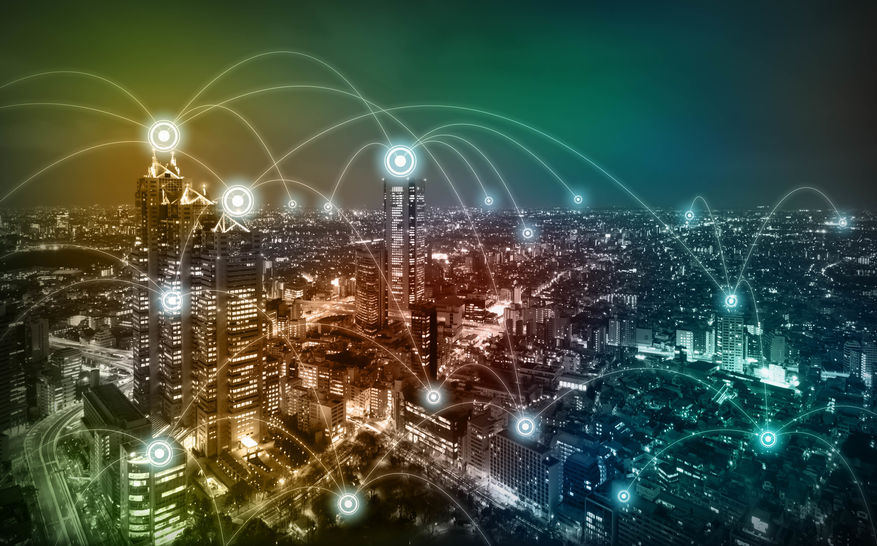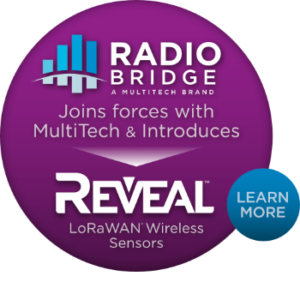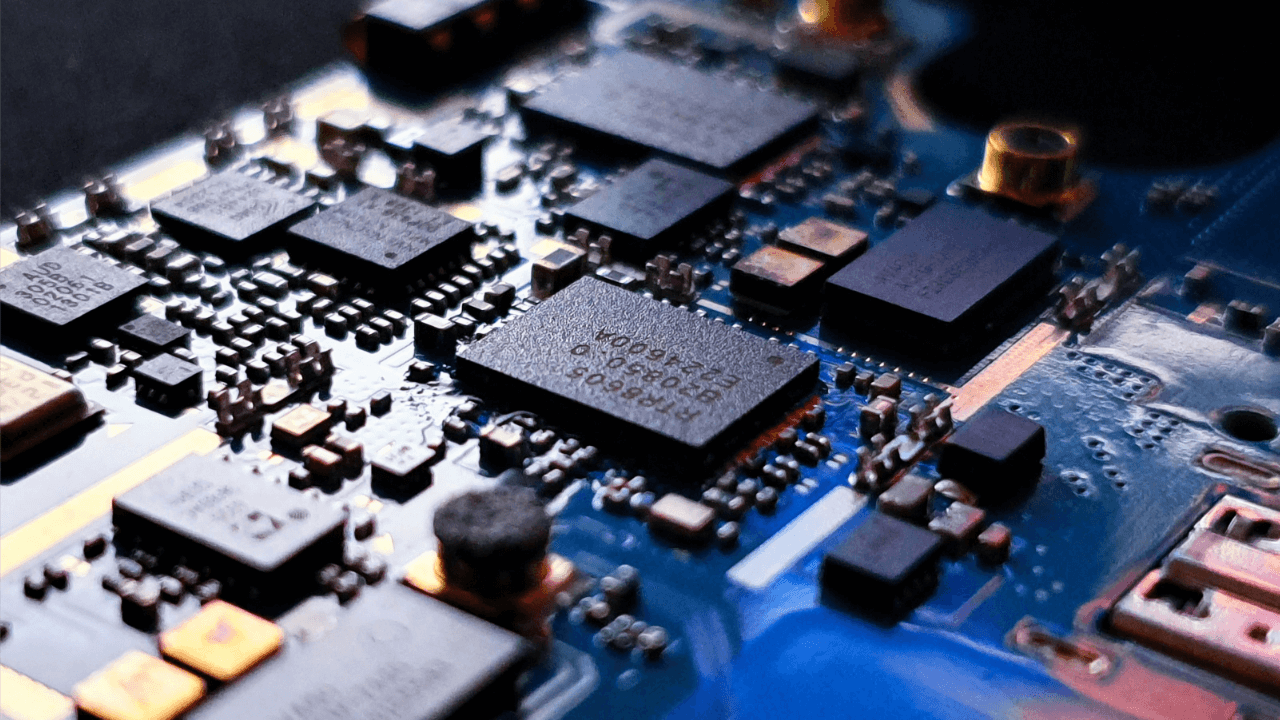
One of the most exciting aspects of the Internet of Things (IoT) is how it is transforming global cities.
Today’s cities are evolving into modern hubs of connectivity and efficiency with long-range wireless sensors. City leaders are using wireless sensor technology to streamline information flow between physical objects in order to optimize infrastructure developments, reduce energy costs, and support business operations.
Here, we highlight several examples of how cities are already taking advantage of low-power wide area networks (LPWANs) and wireless sensors to impact people’s lives and organizations in very tangible ways.
Minimizing Traffic & Congestion
Many cities around the world are turning to wireless sensors to help minimize vehicle congestion in urban areas. Wireless ultrasonic ranging sensors are particularly useful for numerous traffic-related applications, including smart parking spots and lots.
In Barcelona, wireless sensors are embedded in the ground and used to detect parked vehicles in specified locations. This information is sent to mobile apps that drivers can use to quickly find open spaces. Rather than search aimlessly, Barcelona drivers are directed to open spots and avoid wasting time circling city blocks.
The city of Los Angeles embedded wireless sensors in parking spaces and parking lots along a 4.5-mile area of downtown. Now, over 6,000 spaces automatically send data to a smartphone app that drivers use to locate empty spots. This data is also sent to transportation companies and parking agencies so that they can adjust pricing according to demand and time of day.
The Wisconsin-based company, CivicSmart, has installed smart meters all over the country that parking enforcement officers use to monitor spaces across big areas. Officers can see what spots are occupied and unpaid, allowing them to act more quickly when drivers park for too long. Additionally, these meters have internal wireless tilt sensors that help detect if meters have been physically tampered with in any way.
Verizon and Boston are working together to enhance the safety of some of the city’s most dangerous intersections. The company has deployed magnetometer sensors to collect data on passing vehicles and study it alongside camera footage, traffic signal patterns, and bus schedules. With this information, Verizon is trying to identify high-risk intersections that may need to be re-designed for car, cyclist, and pedestrian safety.
Reducing Energy Costs & Evaluating Environmental Conditions
In Barcelona, wireless sensors have also transformed ordinary street lights into intelligent lighting systems. The city’s LED lights remain dim until proximity sensors detect when humans are nearby. Barcelona’s smart lights help conserve energy in areas when foot traffic is low and can automatically adjust when necessary. The city’s streetlights are also equipped with wireless air quality sensors that measure surrounding air quality on behalf of environmental agencies.
Similarly, air sensors installed within city buildings are helping facility managers keep environmental conditions safe and comfortable. Wireless temperature and humidity sensors help facility leads detect cooling system or HVAC system failures early and protect pipes or other temperature-sensitive infrastructural components.
Security firms are using movement sensors to track activity throughout large buildings. Rather than actively patrol all floors or specific areas, security teams can rely on sensors to notify them of unexpected activity. These same sensors can also be combined with intelligent heating and cooling systems to automate temperature regulation. When rooms are unoccupied, sensors will notify building systems to adjust internal conditions accordingly.
The Edge building in Amsterdam is one of the leading smart buildings in the world. There are approximately 28,000 wireless sensors in the building, including motion, temperature, and optical sensors. Deloitte employees have precise control over environmental conditions through a uniquely designed app, thanks to strategically placed sensors. The app learns of employee preferences and can adjust room temperatures automatically for users wherever they go.
Find Your Sensor-to-Cloud Solution
Drive new efficiencies boosting your city’s infrastructure with actionable data using advanced sensor-to-cloud solutions. Explore all of Radio Bridge’s sensor technology.
Optimizing Waste Management & Other Utilities
One of the more interesting ways that cities are using wireless sensors is to maximize waste management efficiency. Cities are turning normal trash receptacles into smart waste bins that can send alerts when they are full and need to be emptied. Consequently, logistics managers at waste management organizations can plan better routes for drivers and only send employees out when necessary.
In Singapore, there are now more than 40 smart waste bins with wireless ultrasonic sensors that can send emails or text messages to cleaners when they are full. The bins even have internal compactors and an enclosed design that keeps scavengers and critters from rummaging through trash. After a trial with 18 smart receptacles, the city found that waste collection time came down 80% as a result of sensor-generated data.
In colder areas, ultrasonic sensors are being used to track snow levels. Public works entities are placing these sensors throughout urban areas to help determine where snow plow vehicles should be sent after heavy snowfalls. In cities with limited snow removal vehicles available, ultrasonic sensors can measure where the snow is deepest and also monitor areas that have caused major transportation or safety issues in the past.
Wireless water leak sensors are also being installed in urban centers to help maintenance teams quickly address issues, such as flooding, pump failures, and leaking pipes. Utility companies are deploying wireless liquid sensors to monitor real-time water flow underground, where it is harder to actively monitor pipe conditions. Abnormal water flow picked up by wireless sensors can indicate blockages or leaks that need to be addressed quickly before they turn into huge problems for public works teams.
Radio Bridge Sensors For Tomorrow’s Cities
These are just a few examples of how wireless sensors are being used in high-tech cities today. As wireless sensor technology continues to improve, expect to see new applications that automate and enhance urban life dramatically.
Radio Bridge is a manufacturer and designer of wireless sensors for next-generation smart cities. Our catalog includes a wide variety of sensors that can be supported on the leading emerging wireless technologies, including LoRa, Sigfox, and NB-IoT.
With our Device Management Console built on top of Amazon AWS, urban-based organizations can configure, provision, and monitor wireless sensors for IoT applications. They can remotely manage hundreds of long-range, low power sensors that are already deployed in the field.
Interested in learning more about how we can support your organization’s smart city objectives?
Contact our team today.





